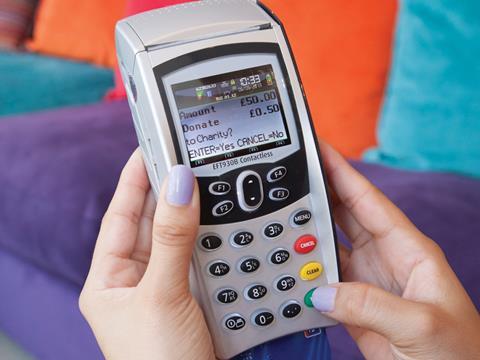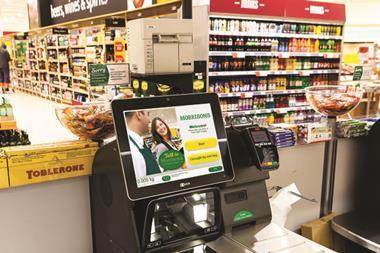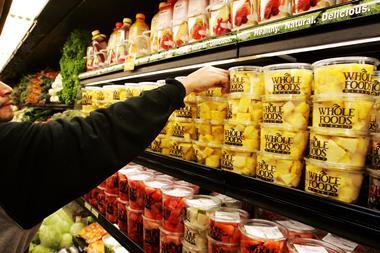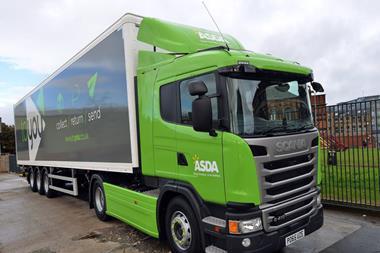
Cash has fallen out of fashion, and with it the fortunes of the checkout charity box. That’s proven problematic for more than 60% of Brits, who prefer chucking change in a tin to cold callers or swerving persistent chuggers, according to Alison Hutchinson, CEO of Pennies. And the charity is convinced it has the solution.
“Being British we don’t like being asked to give in public places,” says Hutchinson, who was headhunted to lead the charity in 2008. “Shoppers don’t want a retailer asking if they’d like to give. We’ve digitised it so it’s always a private choice.”
Launched in 2010, the Pennies digital charity box offers shoppers the chance to donate a few pence to charity at the point of purchase (including online). Consumers opt in rather than out, with the offer disappearing from the screen after a set period of time, and merchants can decide whether to round up to the nearest pound, or top up payments by a set amount between 1p and 99p. Crucially it’s pennies, never pounds.
“Over 90% of people say they’ll only drop coins in a charity box if it’s less than a pound,” Hutchinson says, adding that the move toward digital “micro-donations” has thrived as cash-strapped consumers prefer small, sporadic donations to monthly direct debits.
For instance, TfL now allows Tube travellers to register their contactless card and donate a penny to the Mayor of London fund each time they tap in. Homeless charity Streetsmart also works with restaurants to add a pound to diners’ bills during the festive season. But Hutchinson says “there’s no one else like us. We can help every business, across all their channels, to raise money for whichever charity they want.”
Pizza power
The charity holds on to around 5% of the cash consumers donate to fund it. That’s made clear at point of sale, says Hutchinson. “We’re a charity ourselves,” she adds. “A number of people forget that but we set ourselves up to help the sector be efficient.”
Domino’s was the first to sign up Pennies in late 2010. It’s since raised £1m with five million donations by customers rounding up their pizza prices both online and on its app (from 2013). Restaurant chain Zizzi’s and 48 other businesses followed. The charity has now overseen 22 million consumer donations, with 10 million in the past 12 months alone, raising more than £4.5m.
There’s still work to do to ensure its technology stays up to date with the constantly evolving payments industry, but the charity is working to fill these gaps, turning its attention from SMEs to larger companies, including food and drink retailers.
They have “transformational” spending power says Hutchinson (with 58% of total retail spend in supermarkets alone, according to Payments UK). Pennies has already made inroads into convenience with forecourt trader Rontec installing the system in its 200 Shop ‘N’ Drive stores in October 2014. The company has raised £250,000 for the RNIB in 12 months.
“We’re now in discussions with a number of c-stores at the moment,” Hutchinson says. But convincing the major mults is more challenging, she admits.
The “larger food retailers” wanted reassurance their customers would be happy to be asked to donate, “which is what we’re now proving”. So how soon will it be before a major mult signs up?
“I think when the timing is right for them and probably when they’re doing a technical refresh as it makes it much easier for them to enable that technology,” she says, a little elusively.
But she is clearer on the brand kudos the first mover can expect.
“Consumers are increasingly making choices about whether they want to support merchants that are or aren’t sustainable,” she says. “The first major supermarket and c-store that goes live, because of their sheer scale, will get huge recognition.”
“We’re trying to drive a sustainable source of feelgood giving,” she adds. “If all of us gave 30p a month, just once, that would raise £150m. And it’s the retailers and the merchants that get the recognition because they’re picking the charities, and we’re helping them make it happen. That’s quite exciting.”



















No comments yet